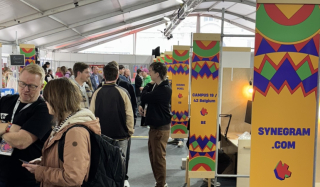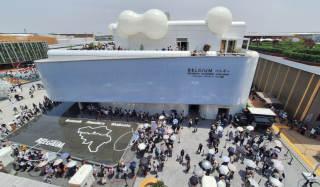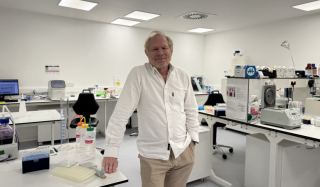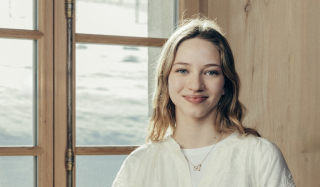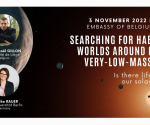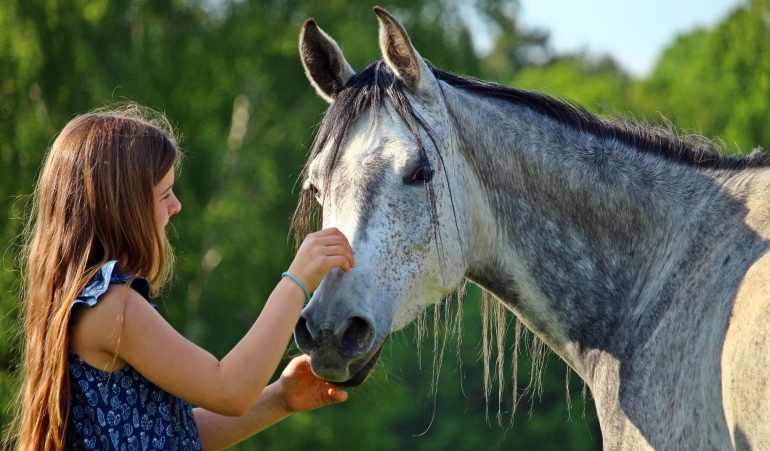
Christian Du Brulle, from the Daily Science platform, met Lucy de Selliers as part of a mission organized by the Research & Innovation Department of Wallonia-Brussels International in Sweden. Discover his interview.
Hippotherapy, a method that puts patients in contact with a horse for therapeutic purposes, is well known. In the Wallonia-Brussels Federation, a university certificate in this field has already been offered by the Faculty of Psychology and Educational Sciences of the UCLouvain. At the Université Libre de Bruxelles, Lucy de Selliers is now exploring one facet of this relationship between humans and horses. For her doctoral dissertation, which she began last year with a Prince Laurent Foundation grant, she is studying the health effects of tactile interactions between women and horses.
Why just women ? "Because horse riding is a very feminine sport," she explains. "But also because in this research, focusing on women avoids duplicating our sample, due to hormonal differences between the sexes."
Hormones and hormone dosages are discussed in her research, supervised by Professor of Neurophysiology and Cognitive Neuroscience Claude Tomberg, in the Faculty of Medicine (ULB). Lucy de Selliers will also take other biomarkers into account. To better understand the beneficial effects of tactile contact between humans and horses, she hopes to subject three times 48 participants and as many horses, recruited in Brussels, but mainly in Wallonia, to her batteries of tests.
Why three times 48 volunteers ? Because in addition to her research protocol linked to real tactile interactions (such as caresses) between humans and animals, she intends to duplicate her results with a sample in which the horse is replaced by a simple blanket, so that the tactile receptors of the person's hand are activated in the same way as in the interaction with the animal, but without the emotional aspect related to the animal's presence. This will allow her to specifically analyse the nerve pathways involved. The third group is a control group, with no direct tactile interactions with animals.
Two lines of research
"My research revolves around two main areas," explains Lucy de Selliers during the equine mission in Scandinavia organised by the Research and Innovation Department of Wallonia-Brussels International. This mission was organised by the WBI Scientific Liaison Officer in Sweden, veterinarian Dr Henri Sprimont.
"On the one hand, we will analyse the emotional impact of the interaction, and on the other hand, we will investigate whether the well-being empirically reported by people during these interactions improves brain function."
"For the emotional aspect, we will analyse the behaviours and facial expressions of both protagonists, the owner and their horse. At the same time, we will analyse a series of physiological biomarkers measured in humans and animals simultaneously. This is the cardiac activity recorded via chest belts adapted to each species. We are also going to take saliva samples from each of these pairs to obtain valuable information about the dosage of certain hormones, namely cortisol, the stress hormone, and oxytocin, the well-being hormone."
The volunteers will, of course, also have to answer various biological and psychological questionnaires during these sessions. This will take place at different times during the protocol, before and after the tactile contact with the horse.
For brain function, Lucy de Selliers will record brain activity (EEG) caused by tactile stimulation and compare it before and after interaction with the horse, to explore whether our brains process sensory information more efficiently and quickly after interaction.
Monitoring of facial microexpressions
"In this study, we hypothesise a decrease in stress, in both the animals and the humans, as a result of tactile interactions," says the doctoral student. "This could also be detected by analysing physical signs in the horse. Its facial microexpressions and spontaneous blinking are good behavioural biomarkers for studying its mental state."
Everything will be filmed during these experiments to capture as much behavioural information as possible.
In Gothenburg (Sweden), a team of researchers is working on tactile fibres. They play an important role here. Measuring their activity at the rider's fingertips will provide the researcher with even more information about the interactions.
"Ultimately, we hope to be able to show an evolution towards positive emotional states in both humans and animals after tactile interactions," summarises Lucy de Selliers. "This will provide some insight into the mechanisms at work in hippotherapy sessions. We are working with healthy people here. But our results could then be of interest to horse therapists."
"At the same time, our work should shed more light on the type of horse temperament that might be best suited to animal mediation and hippotherapy sessions," she concludes.
Find all of Christian Du Brulle's articles on the Daily Science platform, with the support of Wallonie-Bruxelles International.
